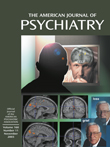This book is exactly what the title purports it to be, a handbook of art therapy. The editor is obviously the driving force behind the production of this book. I found it to be very interesting, attractively printed, and with some nice illustrations. It tells you everything you have ever wanted to know about art therapy. I discovered there is an American Art Therapy Association, of which Malchiodi is a member of the Board of Directors, and a journal of this association called Art Therapy, of which she is a past editor. The second appendix to the book describes the American Art Therapy Association. It includes the ethical standards involved in art therapy and gives an idea of the complete requirements for being a registered art therapist. A board-certified art therapist has completed the requirements for registered art therapist and has also passed a certification examination administered by the Art Therapy Credentials Board. The parallel to psychoanalytic training in the formal psychoanalytic institutes is striking. Clearly, an effort has been made to educate and certify those individuals who wish to carry out art therapy.
In a subjective statement that reminds me of some of the early reports in psychoanalysis, Malchiodi says, “The countless individuals I have been privileged to work with over the last 20 years have repeatedly demonstrated to me how art expression is effective as both a form of therapy and a method of nonverbal communication” (p. ix). She goes on to explain that since there is increasing pressure to complete psychiatric therapy in a limited number of sessions, “Many therapists find art expression helps people to quickly communicate relevant issues and problems, thus expediting assessment and intervention. For this reason alone, helping professionals are increasingly using drawings and other expressive art tasks in therapeutic intervention” (p. xii).
Malchiodi offers this handbook to provide a clear overview of the field of art therapy and how it is practiced, and the volume certainly meets that goal. Malchiodi admits it is still difficult to define art therapy. Certainly some “therapists” see it as a way to help verbalizing thoughts and feelings, etc., and as such it forms an adjunct to psychotherapy. “Others see art itself as the therapy; that is, the creative process involved in art making, whether it be drawing, painting, sculpting or some other art form, is what is life enhancing and ultimately therapeutic” (p. 2). This latter definition differentiates art therapy from standard psychometric art practices such as the Draw-a-Person Test.
What is art therapy all about? As one peruses this book, one begins to understand Malchiodi’s comment, “Although most contemporary practitioners do not take a strictly psychoanalytic, analytic, or object relations approach to art therapy, elements of these philosophies are present in many contemporary art therapy approaches to treatment” (p. 56). This sentence is actually the underlying premise of the book. That is to say, the enormous variety of psychotherapeutic approaches are thought of as “philosophies,” and there always seems to be an art therapist to be found who will practice in accordance with any of these philosophies. So, for example, we have chapters on psychoanalytic, analytic, and object relations approaches; humanistic approaches; cognitive behavior approaches; solution-focused and narrative approaches; developmental art therapy; expressive arts therapy and multimodal approaches; and so on. No real distinction is made among these “philosophies” as to which might be best—it appears to be a matter of taste and choice.
Art therapists seem to practice in two ways as far as their actual therapeutic endeavors are concerned. I got the impression that Malchiodi has a private practice and has patients directly referred to her for art therapy. On the other hand, many art therapists are attached to psychiatric units in hospitals and work in an ancillary fashion as members of a therapeutic team of helping professionals. The basic procedure for some seems to be to have the patient create various artworks in various modalities and then for the art therapist, hopefully with the help of the patient, to try to figure out what they mean.
From the vignettes in this book one gets the impression that a good deal of wild interpretation goes on. There is nothing in the requirements to be an art therapist involving a personal therapy or psychoanalysis for the art therapist before trying to interpret the artwork of others. Of course, those art therapists who use the art modalities simply to encourage the expression of feelings without attempting to interpret the meanings of the material do not need this kind of training.
Many clinical application examples are given in the handbook. Art therapists work with children, adolescents, adults, groups, families, and couples. The book is excellent here because it gives short chapters describing each of these clinical situations and how the art therapist might function.
I have already discussed the second appendix on the Art Therapy Association; the first appendix describes “art-based assessments” such as diagnostic drawings. This aspect of art therapy is much closer to psychometrics and of course offers more standard diagnostic aids. Each chapter in the book has a nice “conclusions” section that briefly summarizes what has been said in the chapter. I learned a great deal in this nicely organized book about the amazing things that people do in the name of therapy and the variety of approaches and philosophies that have ancillary art therapy attached to them or are used as a form of primary treatment by art therapists. For anyone interested in art therapy this will be the definitive volume.

